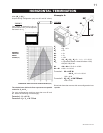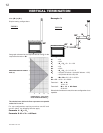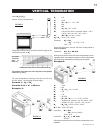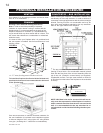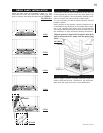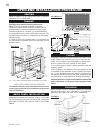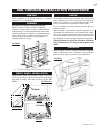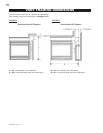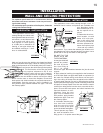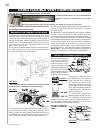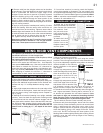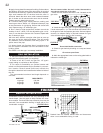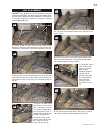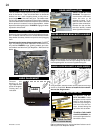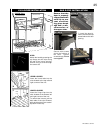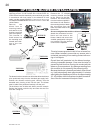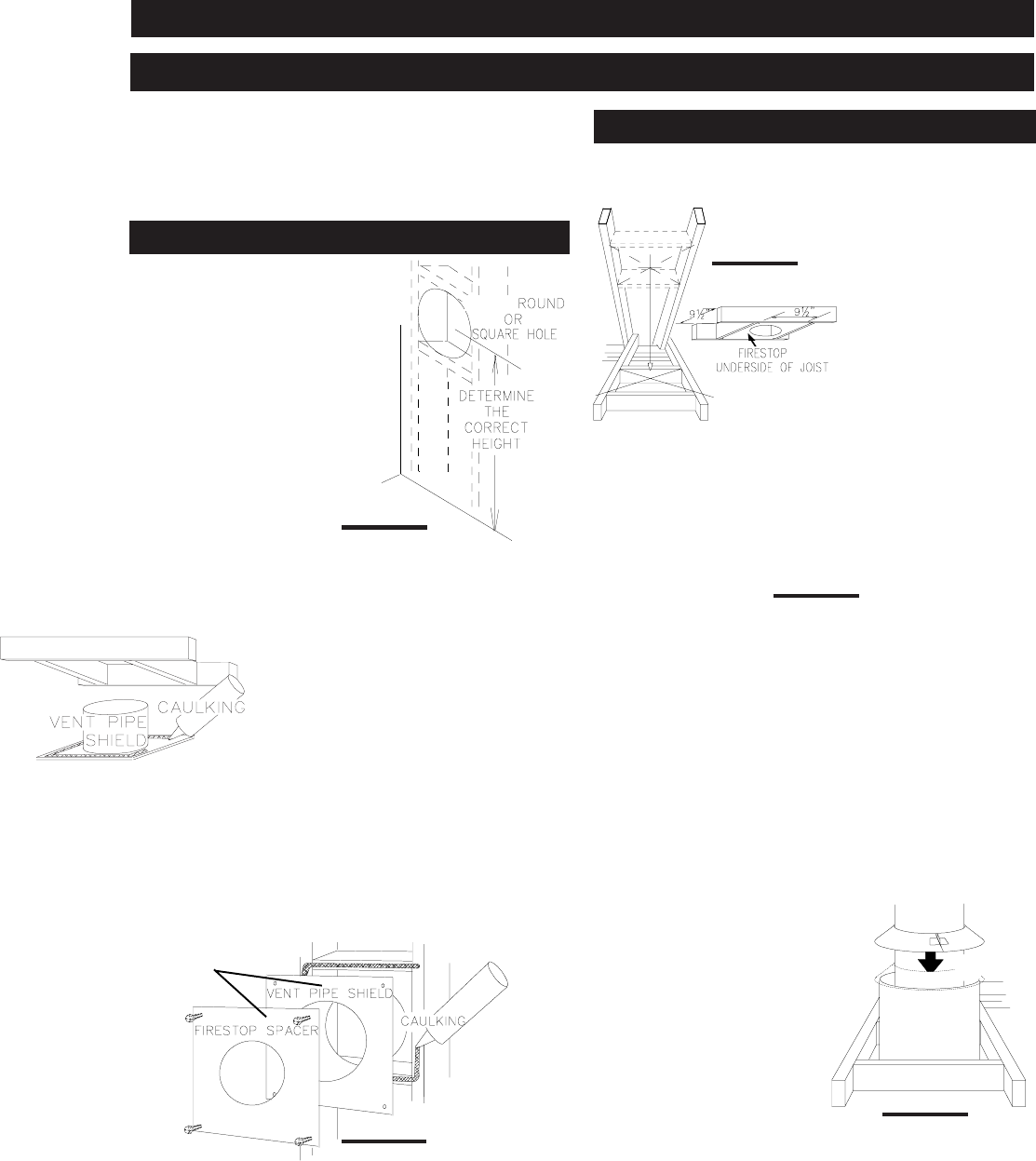
19
W415-0299 / C / 03.12.03
For optimum performance it is recommended that all
horizontal runs have a minimum 1 inch rise per foot us-
ing flexible venting.
For safe and proper operation of the fireplace, follow the
venting instructions exactly.
This application occurs when
venting through an exterior wall.
Having determined the air termi-
nal location, cut and frame a hole
in an exterior wall with a mini-
mum square or round opening
of 10½"
**
**
*. (As an alternative to
framing, a vent pipe shield may
be installed, ensuring a 1" clear-
ance to combustibles.
Mark and cut the vent pipe shield to the determined depth
of the combustible wall. Apply a bead of caulking (not sup-
plied) to the framework or to the shield plate (in the case of
a finished wall) and secure the shield through the opening
to the interior wall. The final location of the vent pipe shield
should maintain the required clearance to the 8" vent
pipe / liner. Do not fill this cavity with any type of material.
Apply a bead of caulking all around and place a firestop
spacer over the vent shield to restrict cold air from being
drawn into the room or around the fireplace. Ensure that
both spacer and shield maintain the required clearance to
combustibles. Once the vent pipe / liner is installed in its
final position, apply sealant between the pipe / liner and
the firestop spacer.
FIGURE 29
OR
This application occurs when venting through a roof. In-
stallation kits for various roof pitches are available from
your Napoleon dealer.
See Accessories to or-
der the specific kit re-
quired.
1. Determine the air ter-
minal location, cut and
frame 10½ inch open-
ings in the ceiling and
the roof to provide the
minimum clearance be-
tween the fireplace pipe
/ liner and any combus-
tible material. Try to center the exhaust pipe location mid-
way between two joist to prevent having to cut them. Use a
plumb bob to line up the center of the openings.
DO NOT FILL THIS
SPACE WITH ANY
TYPE OF MATERIAL.
A vent pipe shield will
prevent any materi-
als such as insula-
tion, from filling up
the 1" air space
around the pipe. Nail headers between the joist for extra
support.
2. Apply a bead of caulking (not supplied) to the framework
or to the Wolf Steel vent pipe shield plate or equivalent (in
the case of a finished ceiling), and secure over the open-
ing in the ceiling. A firestop must be placed on the bottom
of each framed opening in a roof or ceiling that the venting
system passes through. Apply a bead of caulking all around
and place a firestop spacer over the vent shield to restrict
cold air from being drawn into the room or around the fire-
place. Ensure that both spacer and shield maintain the
required clearance to com-
bustibles. Once the vent
pipe / liner is installed in its
final position, apply sealant
between the pipe / liner and
the firestop spacer.
3. In the attic, after the pipe /
liner has been installed,
slide the vent pipe collar
down to cover up the open
end of the shield and tighten.
This will prevent any materi-
als, such as insulation, from
filling up the 1" air space around the pipe.
FIGURE 31
FIGURE 32
VENT PIPE
SHIELD
VENT
PIPE
COLLAR
FIGURE 28
**
**
*
FIGURE 30
INSTALLATION
WALL AND CEILING PROTECTION
HORIZONTAL INSTALLATION
VERTICAL INSTALLATION
10½"



